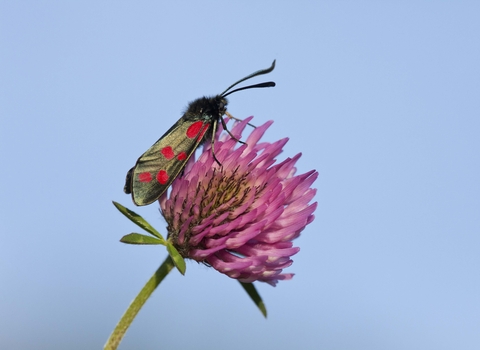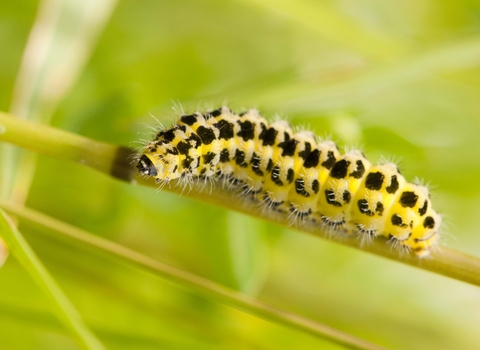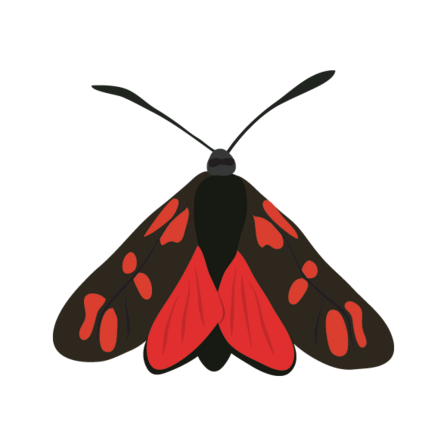
©Guy Edwardes/2020VISION

©Katrina Martin/2020VISION
Six-spot burnet moth
The six-spot burnet moth is a day-flying moth that flies with a slow, fluttering pattern. Look for it alighting on knapweeds and thistles in grassy places. It is glossy black, with six red spots on each forewing.
Scientific name
Zygaena filipendulaeWhen to see
June to AugustAbout
The six-spot burnet is a medium-sized, day-flying moth, commonly found in grasslands, woodland rides and sand dunes, where the caterpillars feed on common bird's-foot trefoil. The adults feed on the nectar of knapweed, thistles and other grassland flowers, and females lay their eggs on the caterpillars' foodplants. The caterpillars hatch and feed, hibernating over at least one winter. They emerge the following spring and pupate in a papery cocoon attached to grass stems.What to look for
The six-spot burnet is glossy black with red spots on its long, narrow wings. There are six similar species of burnet moth in the UK: this is the only one with six red spots on each forewing; the other common species have five spots.Where to find
Widespread in England and Wales, rarer in Scotland where it is mainly found near the coast.Did you know?
The red spots of burnet moths indicate to predators that they are poisonous: they release hydrogen cyanide when attacked.Watch
Six-spot burnet moth (https://vimeo.com/473838077)
Six-spot burnet moth ©Tom Hibbert
An illustration of a six-spot burnet moth

Corinne Welch
